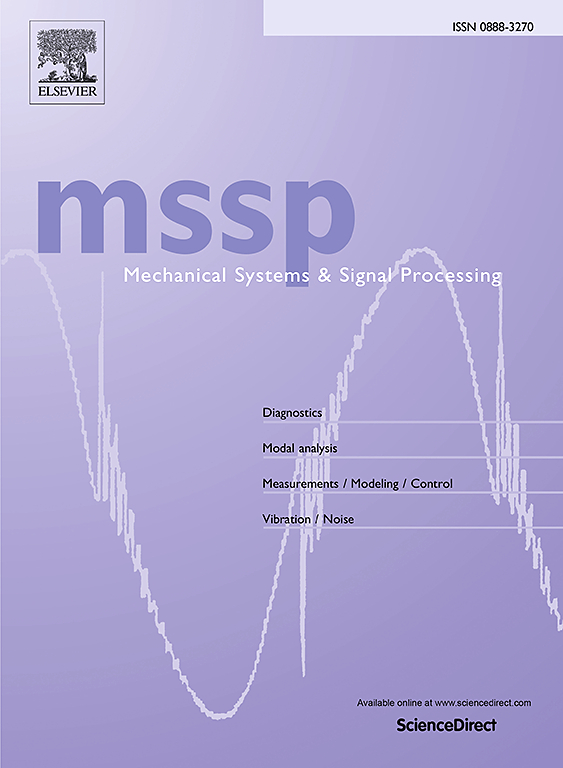基于负质量等效的穿孔板新型统一动力学模型
IF 7.9
1区 工程技术
Q1 ENGINEERING, MECHANICAL
引用次数: 0
摘要
本文章由计算机程序翻译,如有差异,请以英文原文为准。
A novel unified dynamical modeling of perforated plates based on negative mass equivalence
Plate-shaped structures are extensively utilized in aerospace, automotive, marine, and civil engineering, often featuring holes or cutouts for weight reduction, material savings, and design flexibility. However, the irregular shapes of their structures pose challenges in accurately extracting modal shapes using traditional analytical dynamical modeling methods. To address this challenge, this paper proposes a novel semi-analytical method for modal extraction in flat plates, particularly suitable for those with holes or cutouts, based on negative mass equivalence. Taking the perforated flat plates as examples, their dynamical models are developed using polynomial interpolation with Chebyshev polynomials and the Rayleigh-Ritz method. The concepts of “negative mass” and “positive mass” are employed to represent the features of openings, with Lagrange multipliers ensuring compatibility at connection nodes. Model validations are performed through comparisons of results regarding the natural frequencies, modal shapes, and dynamical responses obtained from this method, the finite element method, and the experimental method. The results demonstrate that the RMS error of the natural frequency is within 3.89 % and the accuracy of the model improves as the number of polynomial terms and connection nodes increases. Furthermore, the proposed method employs analytical modal shapes with minimal degrees of freedom to develop models, achieving exceptional computational efficiency with over 98 % time savings compared to the finite element method. This work provides a new pathway for advancing dynamical modeling methods of plates and enhancing simulation efficiency, with the potential to contribute to the development of active control and aeroelastic analysis techniques in plate-shaped structures.
求助全文
通过发布文献求助,成功后即可免费获取论文全文。
去求助
来源期刊

Mechanical Systems and Signal Processing
工程技术-工程:机械
CiteScore
14.80
自引率
13.10%
发文量
1183
审稿时长
5.4 months
期刊介绍:
Journal Name: Mechanical Systems and Signal Processing (MSSP)
Interdisciplinary Focus:
Mechanical, Aerospace, and Civil Engineering
Purpose:Reporting scientific advancements of the highest quality
Arising from new techniques in sensing, instrumentation, signal processing, modelling, and control of dynamic systems
 求助内容:
求助内容: 应助结果提醒方式:
应助结果提醒方式:


